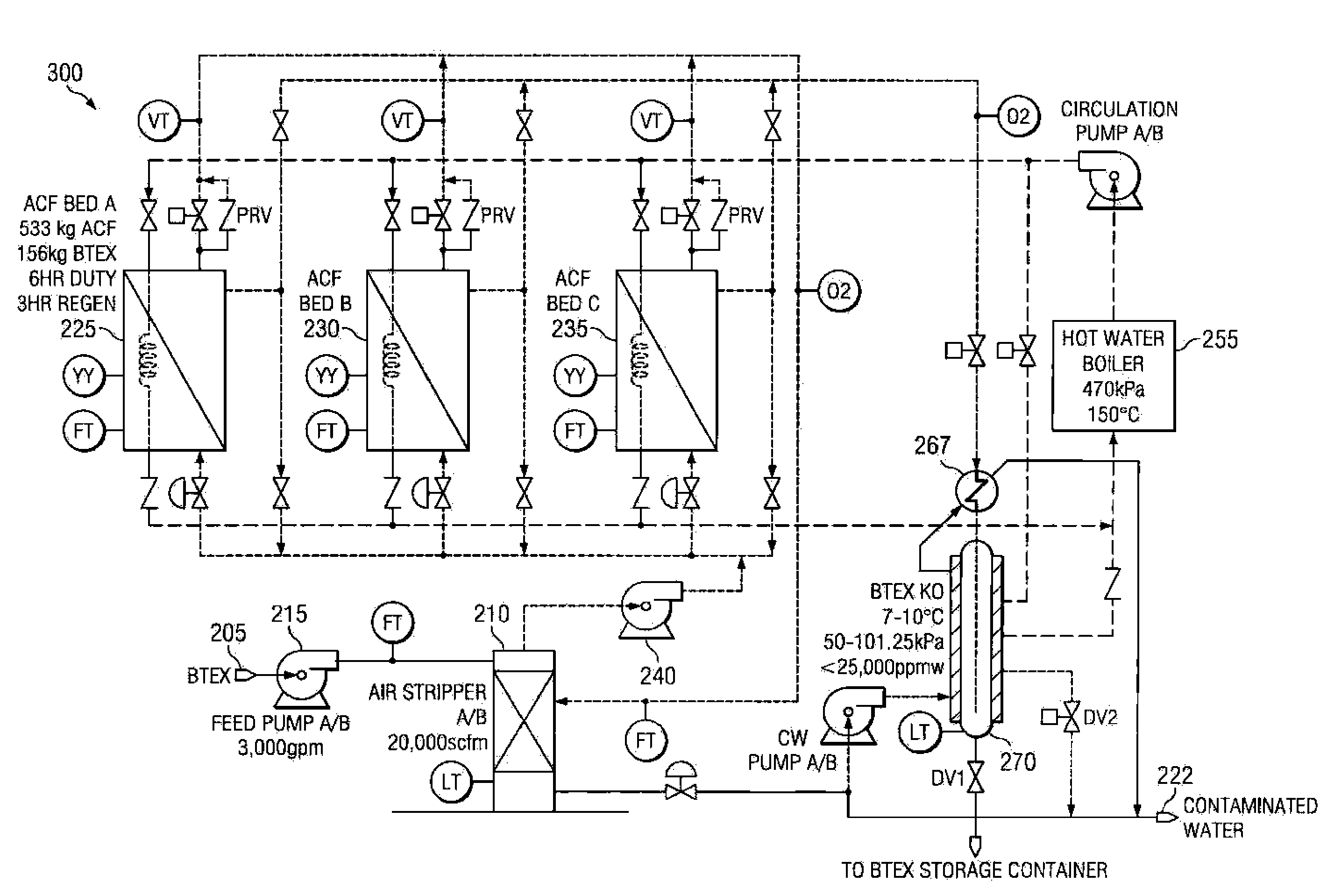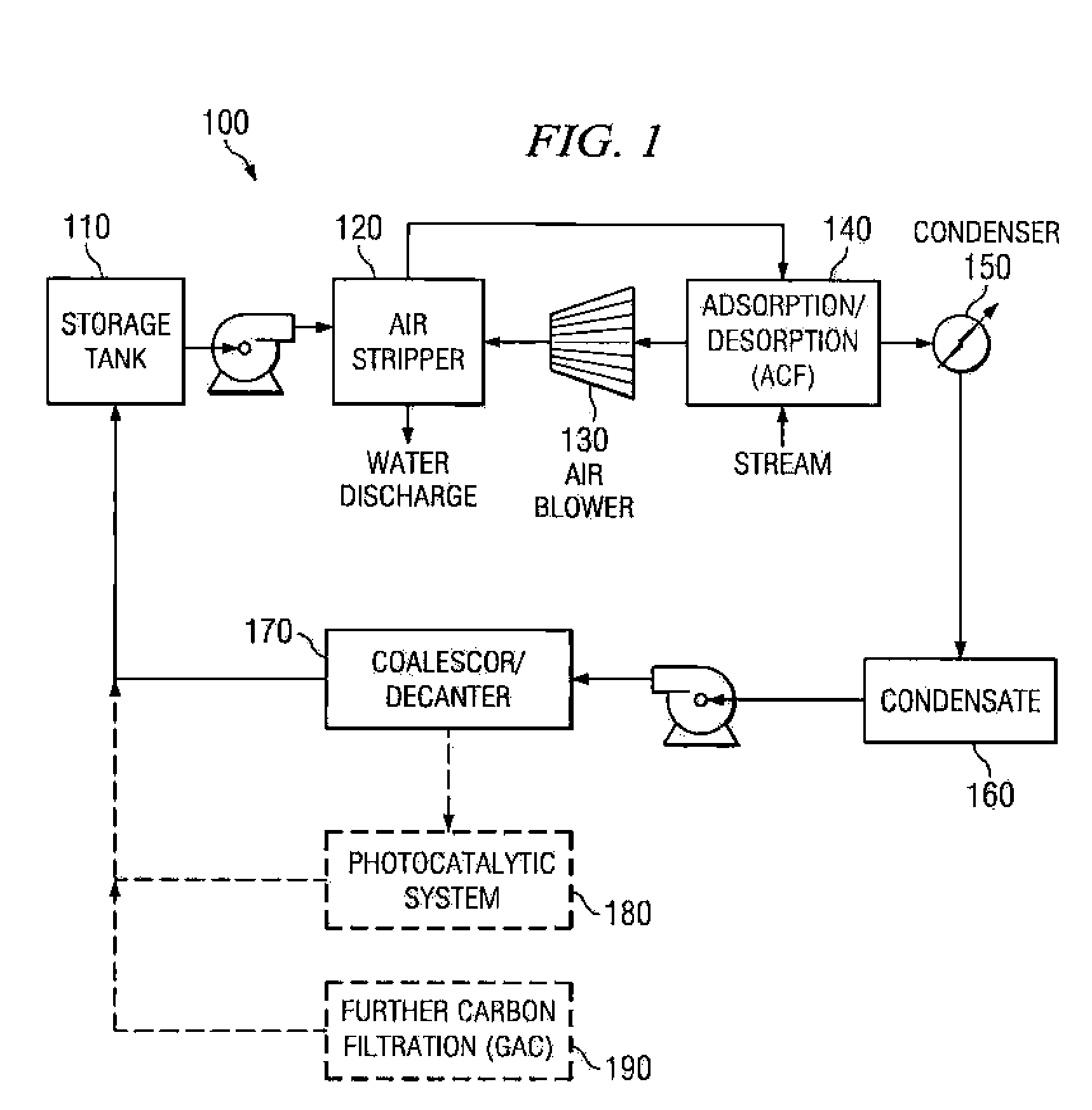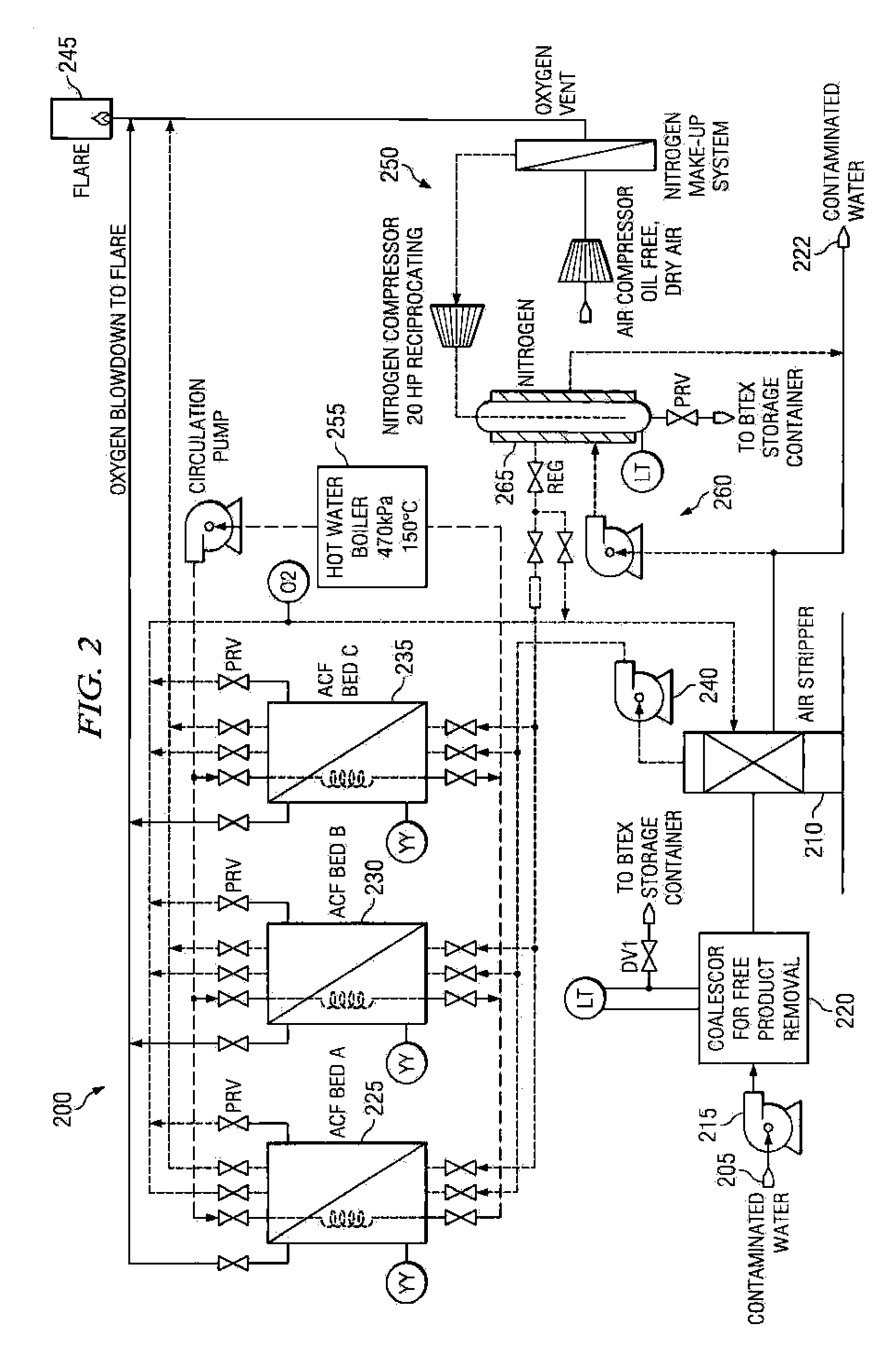Advanced contaminate treatment system
a technology of contaminant treatment and advanced technology, applied in the direction of gas treatment, isotope separation, water/sludge/sewage treatment, etc., can solve the problems of high cost, high capital cost, and inability to achieve acf to concentrate btex, etc., to achieve the effect of increasing costs, increasing capital costs, and high flow rate of wastewater
- Summary
- Abstract
- Description
- Claims
- Application Information
AI Technical Summary
Benefits of technology
Problems solved by technology
Method used
Image
Examples
Embodiment Construction
[0015]Referring to FIG. 1, illustrated is one embodiment of a high flow treatment system 100 according to the principles disclosed herein. The system 100 includes a storage tank 110 where contaminated media may be held prior to entering the system 100 for decontamination. Examples of contaminated media may include seawater, such as that found in ballast applications for large ships, as well as fresh water reservoirs in need of decontamination. Such fresh water applications may be for decontaminating brackish water (e.g., where seawater has contaminated a fresh water supply), or for ground water suffering from high alkalinity (e.g., water residing proximate limestone deposits). Thus, the disclosed techniques are effective for treating organic contaminants in wastewater in various applications where there is a significant flow rate of wastewater to be decontaminated, and even where there are hydroxyl radical scavengers (e.g., alkalinity or chloride ions) in the contaminated media. Mor...
PUM
| Property | Measurement | Unit |
|---|---|---|
| temperature | aaaaa | aaaaa |
| boil temperature | aaaaa | aaaaa |
| boiling temperature | aaaaa | aaaaa |
Abstract
Description
Claims
Application Information
 Login to View More
Login to View More - R&D
- Intellectual Property
- Life Sciences
- Materials
- Tech Scout
- Unparalleled Data Quality
- Higher Quality Content
- 60% Fewer Hallucinations
Browse by: Latest US Patents, China's latest patents, Technical Efficacy Thesaurus, Application Domain, Technology Topic, Popular Technical Reports.
© 2025 PatSnap. All rights reserved.Legal|Privacy policy|Modern Slavery Act Transparency Statement|Sitemap|About US| Contact US: help@patsnap.com



